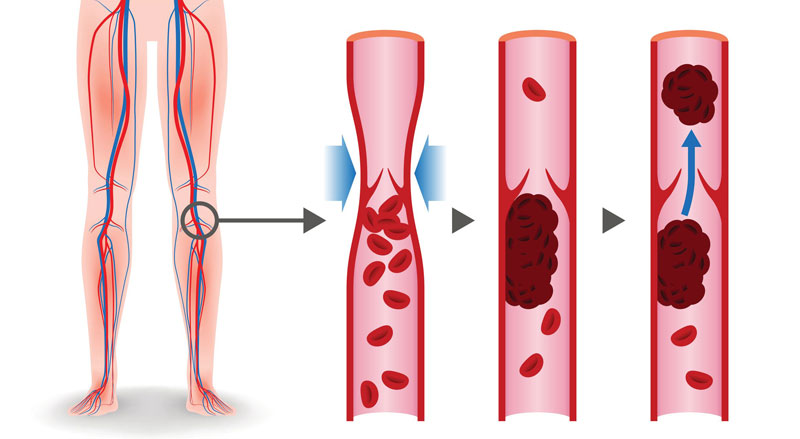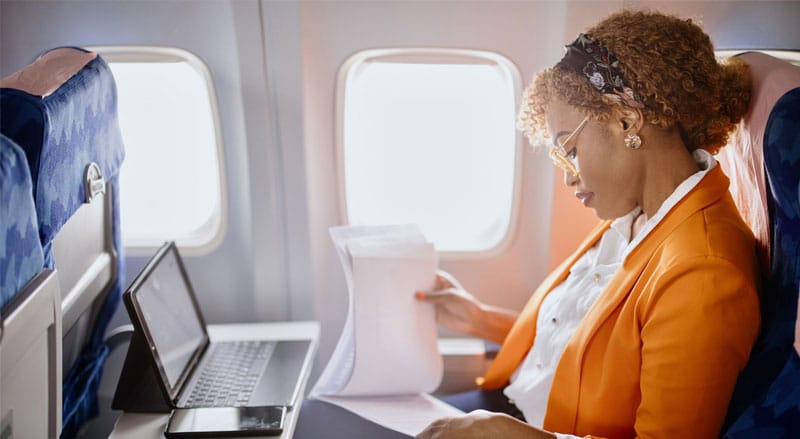Traveler’s thrombosis, also known as economy class syndrome or deep vein thrombosis (DVT), is a medical condition that can occur when a blood clot forms in a deep vein, usually in the leg, after prolonged periods of sitting, such as during air travel or car rides.
Spring and summer often bring travel adventures. Many of us will go to our local airport, check in, go through the standard security measures, and board an airplane for an exciting new destination.
If you have ever travelled for prolonged periods of time, you may have experienced red blotches on your ankles of calves. You’re not alone. This is commonly referred to as Traveler’s thrombosis.
Deep Vein Thrombosis (DVT)
Deep vein thrombosis or DVT, refers to a condition where blood clots form in the leg veins. This may occur in any situation where there is prolonged pooling of blood in the deep veins of the legs or pelvis.

This common for bed-bound persons and those who sit for long periods of time in chairs, cars, trains, or airplanes.
If a clot, or portion of a blood clot becomes detached from the vein, this process is called venous thromboembolism or VTE.
In very few cases a clot, or portion of the blood clot can travel to the lungs and cause a pulmonary embolism, or PE.
This can present as a serious condition, as it is possible for a large embolism to travel in the bloodstream and block a major artery or blood vessel in your lung and can result in death.
Pulmonary embolisms are rare in airline travelers, occurring only in 0.4 million airline passengers. For those passengers experiencing PE, it is fatal about 2% of the time.
Personal risk factors can play a role in the incidence of VTE. Other conditions, like duration of flight and a person’s degree of immobility during the flight, can increase the risk.

Risk factors and symptoms of Traveler’s Thrombosis
The risk of developing traveler’s thrombosis increases when you have additional risk factors such as obesity, pregnancy, smoking, taking birth control pills, or having a history of blood clots.
Symptoms of traveler’s thrombosis can include pain, swelling, redness, and warmth in the affected area. In some cases, the clot may break loose and travel to the lungs, causing a potentially life-threatening condition called a pulmonary embolism.
To reduce the risk of traveler’s thrombosis, it is recommended to take frequent breaks and walk around during long flights, wear compression stockings or socks, and stay hydrated.

It’s also important to talk to a healthcare provider before traveling if there are additional risk factors present.
If you have red blotches on your ankles and legs after air travel, it is recommended that you seek medical attention to determine the cause and receive appropriate treatment.
If you are experiencing any other symptoms, such as pain, swelling, or difficulty breathing, seek medical attention immediately.
Leg and foot swelling during air travel
Leg and foot swelling during air travel is a common problem and is often caused by a combination of factors related to sitting for extended periods of time and the low cabin pressure in airplanes.

During air travel, the lower cabin pressure can cause fluid to shift from the blood vessels into the surrounding tissues, leading to swelling. Additionally, sitting in a cramped position for a prolonged period can cause blood to pool in the legs, further exacerbating the swelling.
Other factors that can contribute to leg and foot swelling during air travel include dehydration, wearing tight-fitting clothing, and not moving around enough during the flight.
People who have pre-existing medical conditions such as heart failure, liver disease, or kidney disease may also be more prone to swelling during air travel.
To prevent or reduce leg and foot swelling during air travel, it is recommended to:
- Wear loose-fitting clothing and comfortable shoes
- Drink plenty of water and avoid alcohol and caffeine
- Walk around and stretch your legs frequently during the flight
- Wear compression stockings or socks, which can help improve blood flow
Consider taking a low-dose aspirin before the flight, especially if you have a higher risk of blood clots.
If you have a pre-existing medical condition, talk to your doctor before flying and ask for specific advice on how to manage swelling during air travel.


